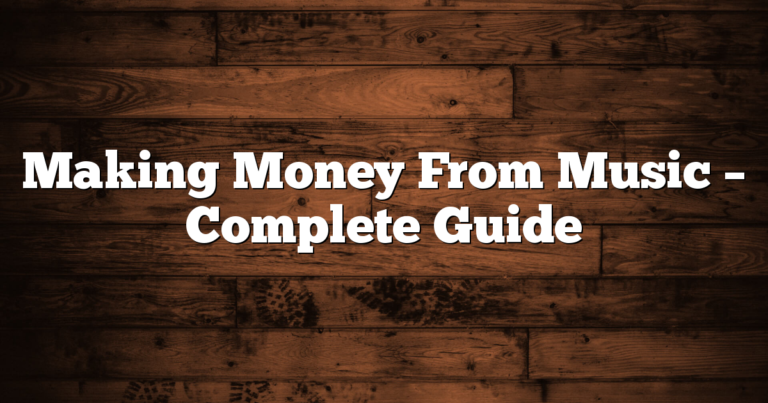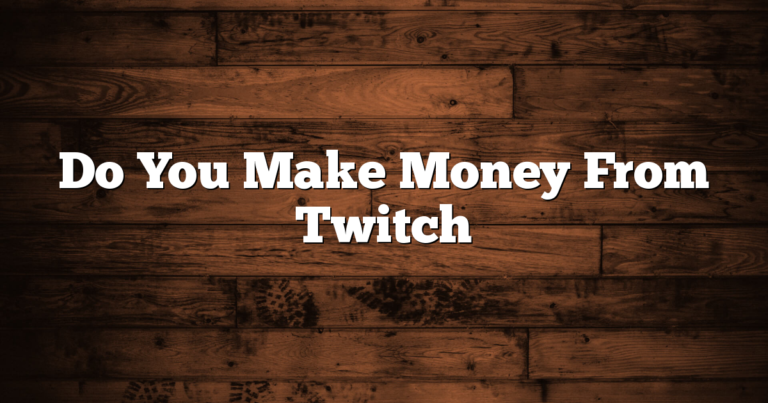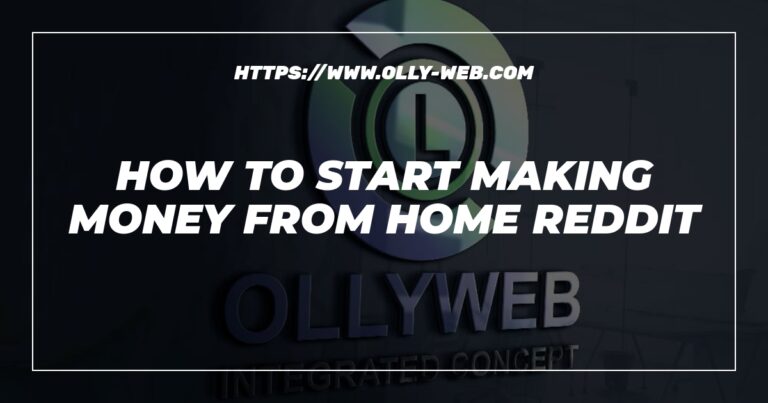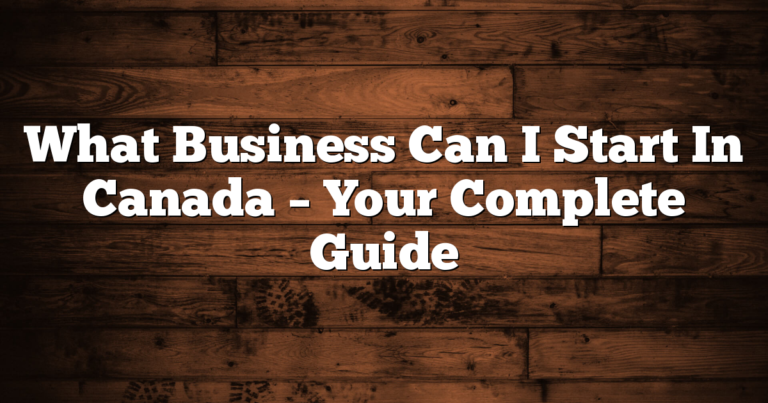How To Start Making Money On Amazon Kdp

Hey there, hustlers! Ready to dive into the world of online entrepreneurship and start raking in some serious cash? Well, look no further because today we're going to spill the beans on how to kickstart your money-making journey on Amazon KDP. Yep, you heard it right – we're about to unlock the secrets to turning your passion for writing into a lucrative side hustle. So grab your favorite beverage, get cozy, and let's get this show on the road!
Finding a Profitable Niche
Alright, let's talk about finding a profitable niche. Now, when it comes to starting a business or launching a new product, finding the right niche is crucial. You want to find a market that is not only profitable but also has a demand for what you're offering. So, how do you go about finding that sweet spot?
First things first, you need to do your research. Look at the current market trends and identify any gaps or underserved areas. This could be a specific demographic that is not being targeted or a product that is in high demand but has limited options available. By identifying these gaps, you can position yourself as the go-to solution and tap into a profitable niche.
Next, consider your own interests and expertise. It's important to choose a niche that you are passionate about and have knowledge in. This will not only make the process more enjoyable for you but also give you a competitive edge. When you have a deep understanding of the niche, you can better cater to the needs of your target audience and provide them with valuable solutions.
Lastly, don't be afraid to think outside the box. Sometimes, the most profitable niches are the ones that are not obvious at first glance. Look for emerging trends or untapped markets that have the potential for growth. By being innovative and willing to take risks, you can carve out a profitable niche that sets you apart from the competition.
So, to sum it up, finding a profitable niche requires thorough research, a passion for the subject, and a willingness to think outside the box. By following these steps, you can identify a niche that not only aligns with your interests but also has the potential for long-term profitability. So go ahead, dive into the world of niche hunting and find your own little corner of success!
Researching Popular Book Categories
So, you're interested in researching popular book categories, huh? Well, you've come to the right place! Let's dive into this topic and explore the wonderful world of books together.
First things first, when it comes to researching popular book categories, it's important to understand that the literary landscape is constantly evolving. What was popular yesterday might not be the hot trend today. That's why it's crucial to stay up-to-date with the latest book releases, bestseller lists, and literary news. One way to do this is by following book blogs, subscribing to bookish newsletters, or even joining online book communities where fellow bookworms share their recommendations.
Now, let's talk about some of the most popular book categories out there. We've got a wide range to choose from, so there's something for everyone. If you're into heart-pounding adventures and epic battles, you might want to explore the fantasy genre. From wizards and dragons to magical realms and prophecies, fantasy books can transport you to a whole new world. On the other hand, if you prefer stories grounded in reality, you might find solace in contemporary fiction. These books often tackle real-life issues, exploring the complexities of human relationships, society, and personal growth.
But wait, there's more! How about diving into the mysterious world of crime and thrillers? If you enjoy solving puzzles and unraveling suspenseful plots, this genre will keep you on the edge of your seat. From gripping detective stories to psychological thrillers that mess with your mind, crime and thrillers offer a thrilling escape from reality. And let's not forget about the ever-popular romance genre. Whether you're a hopeless romantic or just enjoy a good love story, romance books can sweep you off your feet and make your heart flutter.
So, my friend, as you embark on your journey of researching popular book categories, remember to keep an open mind and explore different genres. Who knows, you might discover a hidden gem that becomes your new favorite read. Happy researching and happy reading!
Creating a Compelling Book Title
So, you've finished writing your masterpiece, huh? Congrats! Now comes the fun part – creating a compelling book title that will grab readers' attention and make them want to dive right into your story. Trust me, this is no easy task. Your title needs to be catchy, intriguing, and give a hint of what your book is all about. But fear not, my friend, I'm here to help you navigate this treacherous terrain.
First things first, let's talk about the power of a good book title. It's like the first impression you make on a blind date – it can either make them swoon or make them run for the hills. Your title is the first thing potential readers will see, so it needs to make a statement. It should be like a magnet, drawing them in and making them curious about what lies within the pages. Think of it as your book's wingman, helping you make a killer first impression.
Now, let's get down to the nitty-gritty of creating a compelling book title. One approach is to play with words and use clever wordplay. This can add a touch of whimsy and make your title stand out from the crowd. For example, if your book is a mystery set in a small town, you could go for something like “Murder in Mayberry: A Twisted Tale of Secrets and Suspicion.” See how the alliteration and the reference to a beloved TV show make it catchy and intriguing? It's like a little wink to the reader, inviting them to join in on the fun.
Another approach is to tap into the emotions and themes of your book. Think about what makes your story unique and what emotions it evokes. Is it a heart-wrenching romance? A thrilling adventure? A thought-provoking exploration of the human condition? Use these elements to create a title that captures the essence of your book. For example, if your book is a tearjerker about lost love and second chances, you could go for something like “Fading Echoes: A Bittersweet Journey of Love and Redemption.” This title not only hints at the emotional rollercoaster within, but also paints a vivid picture in the reader's mind.
So, my friend, creating a compelling book title is no easy feat, but with a little creativity and a dash of magic, you can come up with something that will make your book shine. Remember, your title is like the cherry on top of a delicious sundae – it's the finishing touch that completes the whole package. So go forth, brainstorm, and let your imagination run wild. And who knows, maybe one day your book will be gracing the shelves with a title that stops readers in their tracks.
Writing HighQuality Content
So, let's talk about writing high-quality content, my friend. Now, I know what you're thinking – “What's the big deal? Just put some words together and boom, you're done!” But trust me, it's not that simple. Writing high-quality content is an art form, a skill that takes time and practice to master. It's about more than just stringing words together; it's about creating something that captivates, informs, and engages your readers.
First things first, you gotta know your audience, my friend. Who are you writing for? What do they want to know? What are their interests and pain points? Understanding your audience is key to crafting content that resonates with them. You don't want to be writing about the latest fashion trends to a group of car enthusiasts, right? So, do your research, get to know your audience, and tailor your content to their needs.
Next up, let's talk about structure. A well-structured piece of content is like a well-built house – it's sturdy, organized, and easy to navigate. Start with a catchy introduction that grabs your reader's attention and sets the tone for what's to come. Then, break your content into logical sections or paragraphs, using subheadings to guide your reader through the piece. And don't forget to wrap it all up with a strong conclusion that leaves your reader satisfied and wanting more.
Finally, my friend, let's talk about the power of storytelling. People love stories, plain and simple. So, why not incorporate storytelling into your content? Whether it's a personal anecdote, a case study, or a fictional scenario, storytelling can bring your content to life and make it more relatable. It helps your readers connect with your message on a deeper level and keeps them engaged from start to finish.
So, there you have it – the key ingredients to writing high-quality content. Know your audience, structure your piece effectively, and sprinkle in some storytelling magic. With a little practice and a lot of passion, you'll be crafting content that leaves your readers wanting more. Now, go forth and write, my friend!
Designing an EyeCatching Book Cover
So, you want to design an eye-catching book cover, huh? Well, you've come to the right place! Let's dive into the world of book cover design and explore how you can create a cover that grabs attention and leaves a lasting impression.
First things first, you need to understand the essence of your book. What is the story about? What emotions does it evoke? Is it a thrilling mystery, a heartwarming romance, or a thought-provoking non-fiction? Knowing the core of your book will help you capture its essence in the design. Think about the key elements, symbols, or themes that represent your story and brainstorm ways to incorporate them visually.
Next, it's time to get creative! Think outside the box and experiment with different concepts and styles. Look for inspiration in other book covers, artwork, or even nature. Consider the use of colors, typography, and imagery that align with your book's genre and target audience. Remember, your goal is to stand out from the crowd, so don't be afraid to take risks and try something unique.
Once you have a few design ideas, it's time to bring them to life. You can either hire a professional designer or take matters into your own hands if you have some design skills. There are plenty of online tools and software available that can help you create a stunning book cover. Play around with different layouts, fonts, and images until you find the perfect combination that captures the essence of your book.
Remember, an eye-catching book cover is like a window into your story. It should intrigue potential readers and make them curious to explore what lies within. So, take your time, be bold, and let your creativity shine through. Good luck, and may your book cover be the talk of the town!
Formatting the Book for Kindle
So, you've finished writing your book and now you're ready to share it with the world. That's awesome! But before you hit that publish button, you need to make sure your book is properly formatted for Kindle. Formatting can make or break the reading experience for your audience, so it's important to get it right. Let's dive into the nitty-gritty of formatting your book for Kindle.
First things first, you need to convert your manuscript into a format that Kindle can understand. The most common file format for Kindle is MOBI, so you'll need to convert your manuscript into this format. There are several tools available online that can help you with this, such as Calibre or Kindle Create. These tools will take your manuscript and convert it into a MOBI file that is compatible with Kindle devices.
Once you have your MOBI file, it's time to start formatting your book. This is where things can get a little tricky, but don't worry, I've got your back. Start by opening your MOBI file in a program like Kindle Create or Kindle Previewer. These programs will allow you to see how your book will look on different Kindle devices and make any necessary adjustments.
Next, you'll want to focus on the layout of your book. Make sure your chapters are clearly marked and that there is consistent spacing between paragraphs. You can also add in some stylistic elements, like drop caps or chapter headings, to make your book visually appealing. Just be careful not to go overboard with the formatting, as too many fancy elements can distract from the actual content of your book.
Finally, it's time to proofread your formatted book. Go through each page carefully, checking for any formatting errors or typos. It's always a good idea to have a fresh pair of eyes look over your book as well, as they may catch things that you missed. Once you're confident that your book is properly formatted and error-free, you're ready to publish it on Kindle and share your amazing work with the world.
Formatting your book for Kindle may seem like a daunting task, but with the right tools and a little bit of patience, you can create a professional-looking ebook that readers will love. So take your time, pay attention to the details, and soon enough, your book will be ready to take the Kindle world by storm. Good luck!
Setting the Right Price for Your Book
So, you've finally finished writing your book, huh? That's awesome! Now comes the tricky part – setting the right price for it. I mean, you don't want to undersell yourself and end up feeling like you're practically giving it away, right? But at the same time, you don't want to overprice it and scare potential readers away. It's all about finding that sweet spot, my friend.
First things first, you gotta do your research. Look into similar books in your genre and see what they're priced at. Are they bestsellers? Are they self-published? Take note of their prices and try to gauge where your book fits in. You don't want to be too far off from the competition, but you also want to stand out in some way. It's like finding the perfect balance between fitting in and standing out at a party, you know?
Next, think about your target audience. Who are the people you want to read your book? Are they young adults who are into fantasy novels? Or maybe they're business professionals looking for some self-help wisdom. Understanding your audience is key to setting the right price. If you're targeting a niche market, you might be able to charge a bit more because your book is catering to a specific need or interest. On the other hand, if you're aiming for a broader audience, you might want to keep the price more accessible to attract a larger number of readers.
Lastly, consider the value you're providing with your book. What makes it unique? Is it packed with valuable information, or is it a gripping story that will keep readers on the edge of their seats? If your book offers something truly special, you can justify a higher price. People are willing to pay more for quality, after all. But if your book is more of a light read or a quick guide, you might want to keep the price on the lower side. It's all about finding that balance between the value you're providing and the price you're asking for.
So, my friend, setting the right price for your book is all about doing your research, understanding your audience, and considering the value you're providing. It's like a delicate dance, but once you find that sweet spot, you'll be on your way to success. Good luck, and may your book fly off the shelves!
Optimizing Your Book Description
So, you've finished writing your book and now it's time to tackle the daunting task of creating a book description that will grab readers' attention and make them want to buy your book. Don't worry, I've got your back! In this conversation, we're going to dive deep into the art of optimizing your book description to make it shine like a diamond in a sea of words.
First things first, let's talk about the importance of a killer opening line. Just like a first impression, the opening line of your book description needs to hook the reader right from the start. Think of it as the bait that lures them in. You want to make it intriguing, captivating, and impossible to resist. It's like a siren's song, calling out to potential readers and promising them an unforgettable journey.
Next up, let's talk about the power of storytelling. Your book description should read like a mini-story, giving readers a taste of what they can expect from your book. Use vivid language and descriptive imagery to transport them into the world you've created. Paint a picture with your words and make them feel like they're right there, experiencing the story alongside your characters. Remember, you're not just selling a book, you're selling an experience.
Lastly, don't forget to highlight what makes your book unique. What sets it apart from the rest? Is it a fresh take on a familiar genre? Does it tackle a controversial topic? Is it filled with unexpected twists and turns? Whatever it is, make sure to emphasize it in your book description. Show readers why your book is a must-read and why they won't be able to put it down. Be confident, be bold, and let your book description shine like a beacon in the crowded sea of books.
So there you have it, my friend. Optimizing your book description is all about grabbing readers' attention, telling a compelling story, and showcasing what makes your book special. With these tips in your arsenal, you'll be well on your way to creating a book description that will make readers click that “buy now” button faster than you can say “bestseller.” Good luck, and happy writing!
Promoting Your Book on Social Media
So, you've written a book, huh? That's awesome! Congrats on completing such a creative endeavor. Now, it's time to get the word out and promote your masterpiece to the world. And what better way to do that than through the power of social media?
Social media platforms have become the go-to place for people to connect, share, and discover new things. It's like a virtual hangout spot where everyone's invited. So, why not take advantage of this digital playground to promote your book?
First things first, you need to establish a strong online presence. Create accounts on popular social media platforms like Facebook, Twitter, Instagram, and maybe even TikTok if you're feeling adventurous. Make sure to use eye-catching profile pictures and catchy bios that reflect your book's theme or genre. You want to grab people's attention right from the start.
Once you've set up your accounts, it's time to start engaging with your audience. Don't just post about your book all the time, though. That's a surefire way to turn people off. Instead, mix it up with interesting and relatable content. Share behind-the-scenes tidbits about your writing process, post quotes from your book that resonate with readers, or even ask thought-provoking questions related to your book's themes. The key here is to create a genuine connection with your audience and make them feel like they're a part of your journey.
Now, let's talk about hashtags. These little guys can be your best friends when it comes to promoting your book on social media. Do some research and find out which hashtags are popular in your book's genre or niche. Incorporate these hashtags into your posts to increase their visibility and reach a wider audience. But remember, don't go overboard with the hashtags. Stick to a few relevant ones that truly represent your book.
Another great way to promote your book on social media is by collaborating with influencers or book bloggers. These folks have a dedicated following who trust their recommendations. Reach out to them and offer them a free copy of your book in exchange for an honest review or a shoutout on their social media platforms. This can help generate buzz and attract new readers who might not have discovered your book otherwise.
So, there you have it! A few tips to help you promote your book on social media. Remember, it's all about creating a genuine connection with your audience, sharing engaging content, and leveraging the power of hashtags and collaborations. Now go out there and let the world know about your amazing book!
Monitoring Sales and Reviews
So, let's talk about monitoring sales and reviews. This is a crucial aspect of any business, my friend. You see, keeping an eye on your sales and reviews can give you some serious insights into how your products or services are performing in the market. It's like having a crystal ball that tells you what's working and what's not.
Now, when it comes to monitoring sales, you gotta be on top of your game. You need to track every single transaction, every dollar that comes in, and every product that goes out. This way, you can spot any trends or patterns that might be emerging. Maybe you notice that certain products are flying off the shelves while others are gathering dust. Armed with this knowledge, you can make informed decisions about your inventory, pricing, and marketing strategies.
But it's not just about the numbers, my friend. Reviews play a huge role in shaping your reputation and customer perception. People love to share their experiences, whether they're good, bad, or somewhere in between. And you know what they say, word of mouth can make or break a business. So, it's essential to keep a close eye on those reviews. Respond to them, engage with your customers, and show them that you care. A positive review can be a powerful marketing tool, while a negative one can be an opportunity for improvement. By monitoring your reviews, you can address any issues promptly and ensure that your customers are happy campers.
In a nutshell, monitoring sales and reviews is like having your finger on the pulse of your business. It gives you valuable insights into what's working and what's not, allowing you to make informed decisions and keep your customers satisfied. So, my friend, don't underestimate the power of monitoring. It's the secret sauce that can take your business to the next level.
Another post you might find useful is, How To Start Making Money From My Laptop.
I've also written about How To Start Making Money Online, so feel free to check that out, or bookmark it for later!






